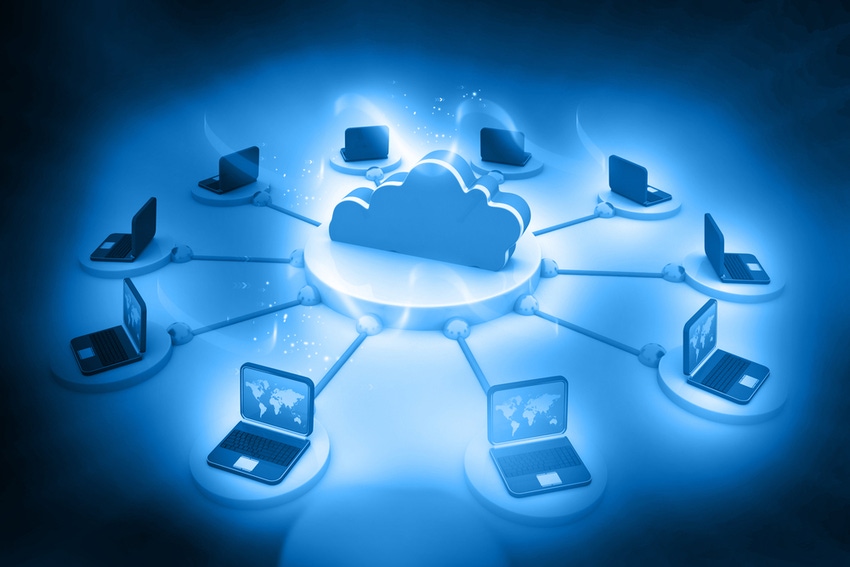Learn EUC trends, channel opportunities and top strategies to improve mobile and remote workforce experiences.
August 2, 2022

By Simon Townsend

Simon Townsend
As the world of digital work evolves to a new hybrid model, end-user computing (EUC) professionals everywhere continue to seek the strategies that will help to improve the management, security and employee experiences for their mobile and remote workforce.
This was a core topic at the annual EUC event, DISRUPT End User Computing Forum, which this year is being held as a road show in 21 cities across North America and Europe. The event brings together industry experts discussing the latest ways to deliver modern and secure workspaces for employees, including the use of virtual desktop infrastructure (VDI) and desktop-as-a-service (DaaS) technologies.
Among the sessions is a panel discussion called “Think Tank: VDI & DaaS in a Hybrid World.” It features a roundtable between EUC leaders and experts from Microsoft, VMware, Nerdio and IGEL exploring the most important trends in VDI and DaaS in this new hybrid work era. Following are some of the top lessons learned as the panel discussed EUC industry trends, the impact of today’s employee work styles and key opportunities for the channel:
From Crisis Comes Opportunity
The saying goes, “From crisis, comes opportunity.” When exploring the rapid adoption and rising growth of the VDI and DaaS market in the last two years, the panelists shared some of the top ways this market acceleration was also surprising.
First among them is how VDI is now enabling more graphically intense use cases. Panelists agreed that while there has been tremendous growth in VDI and DaaS adoption as it enables organizations to deploy “work from anywhere,” there is a growth in use cases that weren’t typically considered for VDI technology – specifically those that are more graphically intense. Power on the back end and improvements to the protocols and on the endpoint, such as technology to allow video and audio communications to take place, are providing experiences that are better – even in high-performance computing environments where VDI hasn’t historically been embraced.
It’s also driving enhancements beyond VDI and DaaS into the virtual apps users rely on. This has had a dramatic impact on user experience in a short time. Many deployments set records, being rolled out in weeks, if not days, instead of months and years. In one example, a customer was able to spin up 30,000 VMware virtual desktops in days. This is a silver lining in the impact of the pandemic on workplace productivity and agility.
Employee Lifestyle as Important as Work Style
Panelists also highlighted how employees are driving a different type of work style when it comes to hybrid working. Members noted Gartner has posited that “employee segmentation models limited to work-specific contexts are unfit for the modern workplace. I&O leaders must deliver human-centric IT services by contextualizing employee lifestyles to maximize productivity, improve the digital employee experience, and identify security requirements.” Gartner goes on to cite that 75% of hybrid or remote workers say their expectations for working flexibly have grown. In response, panelists agreed that the industry needs to think about the experiences that technology can offer.
However, it was also pointed out that we can’t think about just the technology. The example offered was if you take someone who lives in the city, they might have just a desk with a computer and monitor. If we send them a whole kit of additional computer equipment, that doesn’t work for their lifestyle. And what about those generations of employees just entering the market? They’re “computer natives” who already have devices. EUC vendors need to take advantage of this new dynamic to …
… give these users what they really want to support both their lifestyle as well as their work style.
On the other hand, the panel also explored how organizations are facing the challenge of people coming back to the office with a lot of talk about reduction of office space. Organizations want to bring people back to collaborate in shared meeting rooms and collaboration spaces. So, they need to think about how they can spin desktops up to support a more fluid office working model.
This doesn’t just apply to enterprises and midmarket companies. The panel participants shared that they are seeing smaller businesses going for virtualization technology, too. Small businesses, if they want to be competitive, must accommodate that flexibility just like their larger rivals. Windows 365, for example, is designed to be simple. By using it, companies don’t have to spin out a full environment, which is becoming a game changer for businesses both large and small.
Opportunities Ahead for Channel Partners and Customers
Overall, panelists agreed VDI and DaaS solutions are delivering options for partners and customers. The VDI market is made up of 15% of the overall corporate desktops worldwide, and that percentage is only going to grow. Partners and customers need to think about what the future will look like and have internal discussions on how to adapt to deliver on it.
Here are some insights into what trends and opportunities are ahead:
Rise of services. From a broader trends’ perspective, the panelists also discussed the post-COVID 19 Great Resignation or Great Re-Shuffle. Recent data suggests that although more workers are quitting their jobs, they’re switching their occupation or field of work, rather than leaving the labor force altogether. This leads to a larger uptick in external-party services and bringing in people to backfill roles for up to 12 months. That lends itself to more flexible models for delivering EUC than having laptops on a shelf.
SMBs gaining competitive footing. New opportunities are in store for SMBs as workforce agility expands their playing field. The adoption of DaaS is really accelerating in the SMB space and it’s a good opportunity for channel partners to address the range of different management styles for using DaaS solutions. Partners and customers need to think about what that means from a security and data-retention perspective with having user data stored in the cloud versus on each endpoint. They need to have the ability to secure sensitive data and make it easier for administrators to manage. Also, they need to think about technology that allows a “point in time” restore feature for users to easily fall back without having to manage or physically touch the endpoint.
The new view on business continuity. As cyberthreats continue to be top of mind, the positioning of VDI and DaaS solutions as part of an overall business continuity and disaster recovery solution will begin to take stronger hold. Many organizations will look to VDI as a potential backup plan to ensure employees remain productive in the event of a cyberattack. The panelists shared how this business continuity use case has come up more recently because of the cyber activity that has resulted from the war in Ukraine.
Breaking down the corporate hiring walls. One final additional macro trend this panel discussed is the global resource and staffing gap challenges organizations are facing, including the lack of workers across so many industries. It’s affecting everything. The flexibility delivered by DaaS and VDI is one way companies are finding to work around the employee resource and recruiting challenge as it enables greater freedom to hire, regardless of where workers are. This flexibility for many companies is changing the dynamics of their workforce and increasing employee loyalty and productivity.
Hearing the insights of these thought leaders, it’s clear that VDI and DaaS opportunities for the channel abound.
Simon Townsend is chief marketing officer for IGEL and is a frequent industry speaker and author on topics related to endpoint security, VDI, Citrix, Windows and DaaS. He has helped manage marketing, product marketing, product management and global systems engineering for several enterprise software companies. Previously, he was chief technologist and a member of the Office of the CTO for Ivanti. You may follow him on LinkedIn or @IGEL_Technology on Twitter.
You May Also Like
